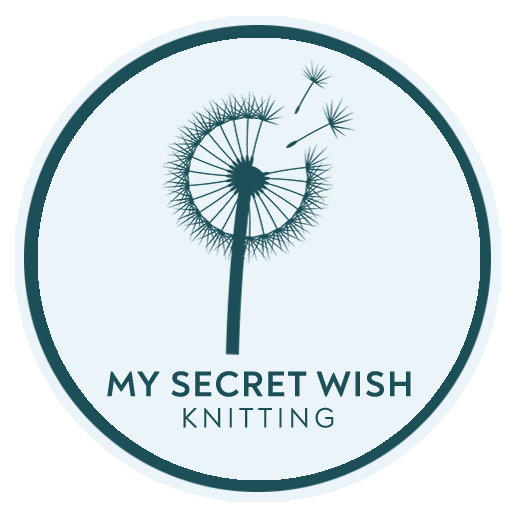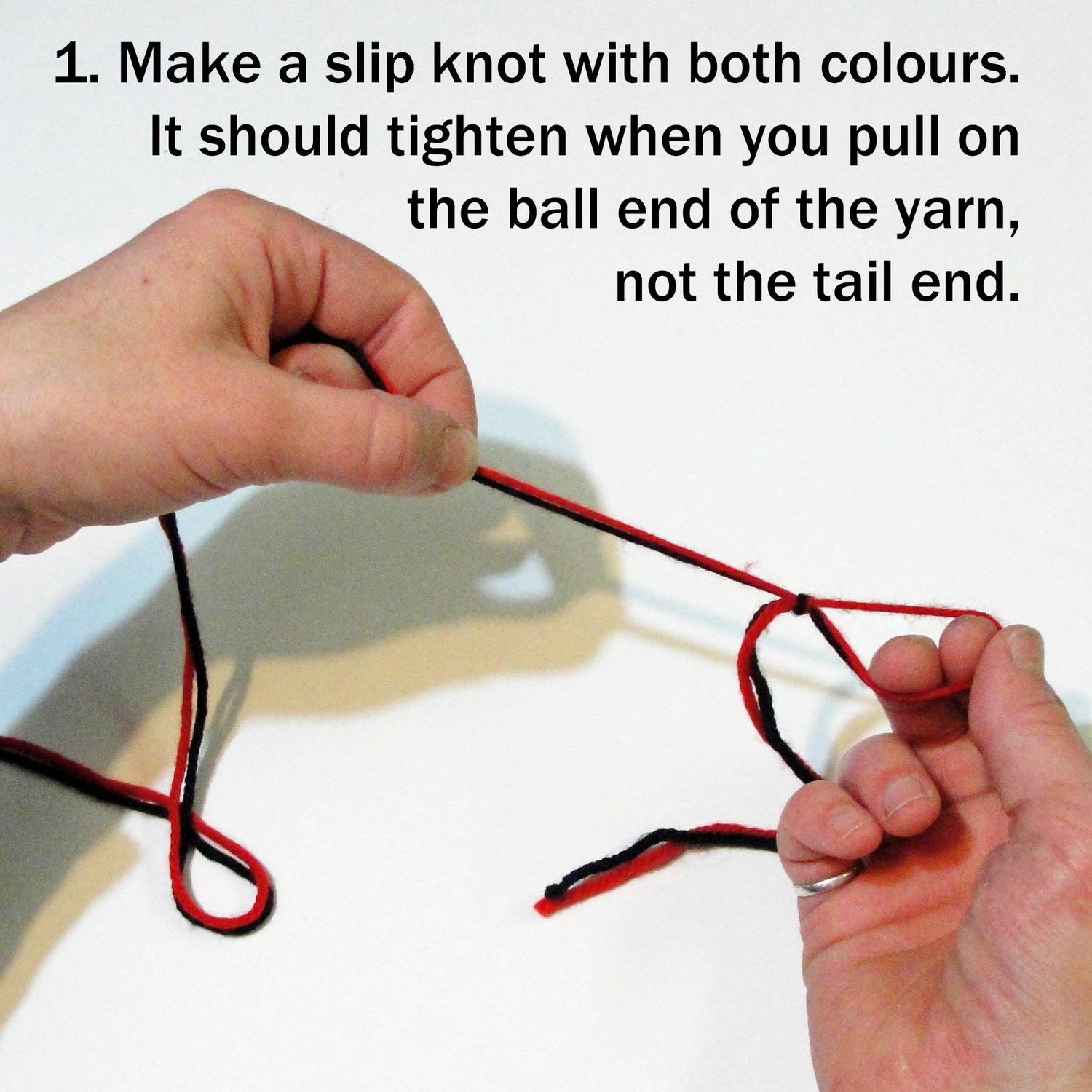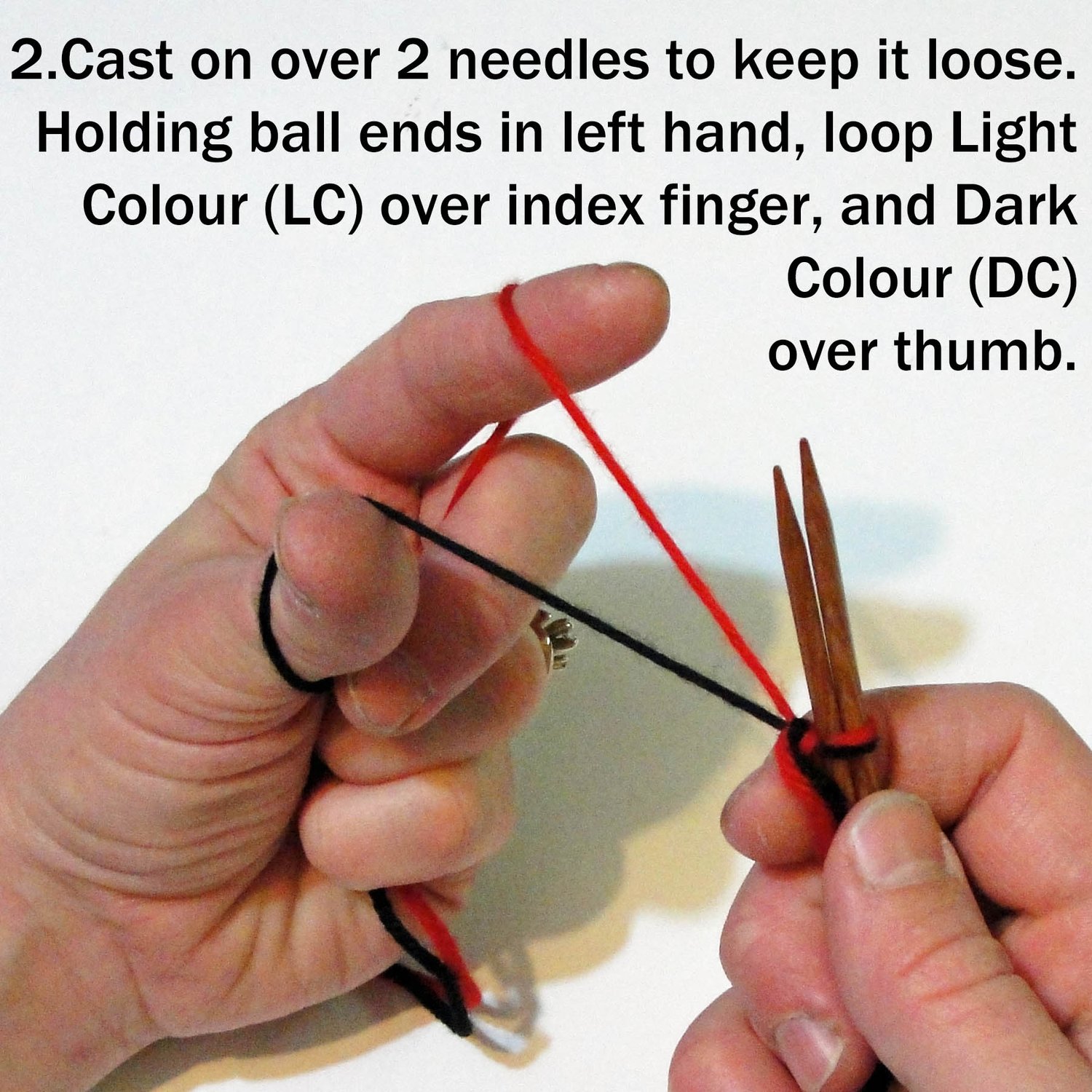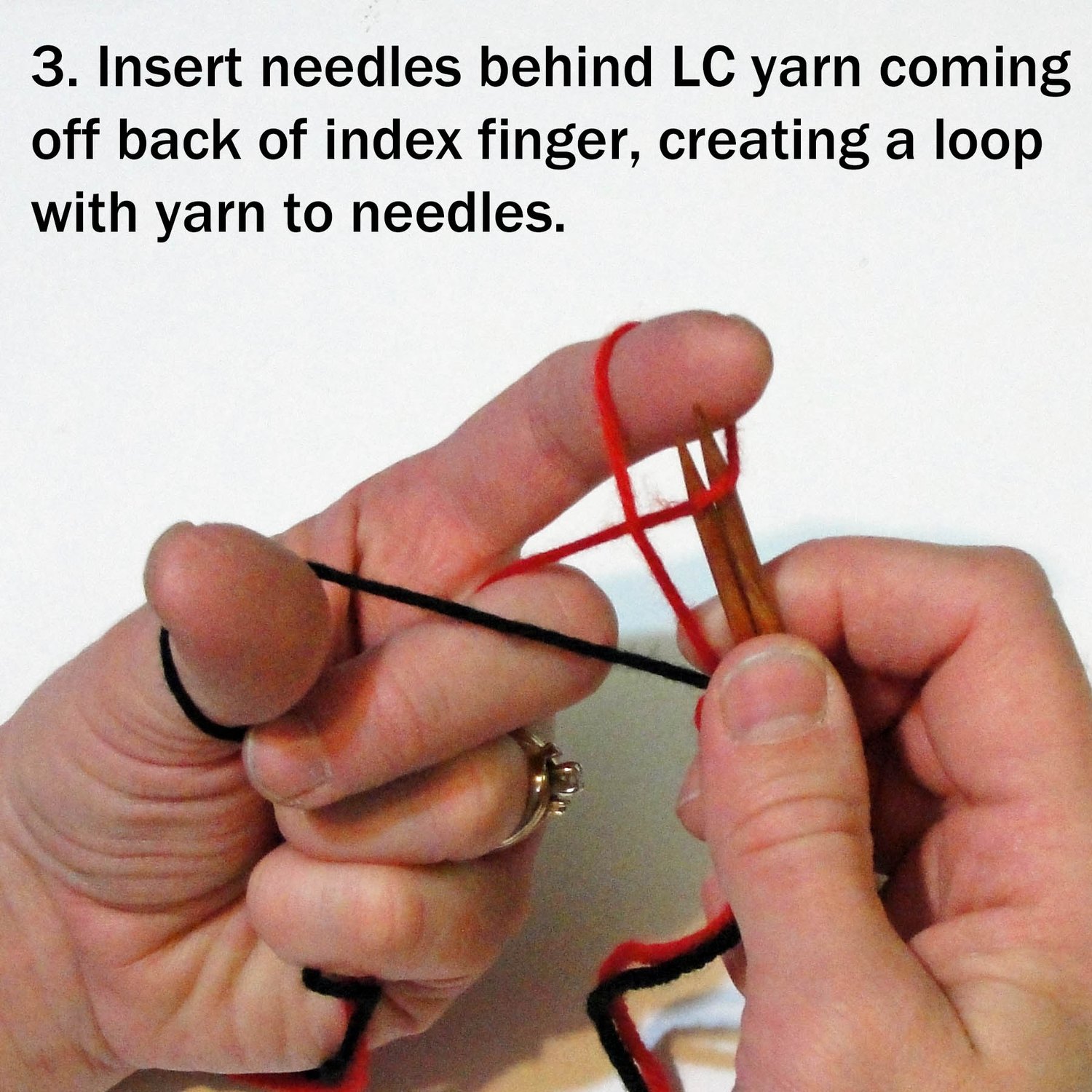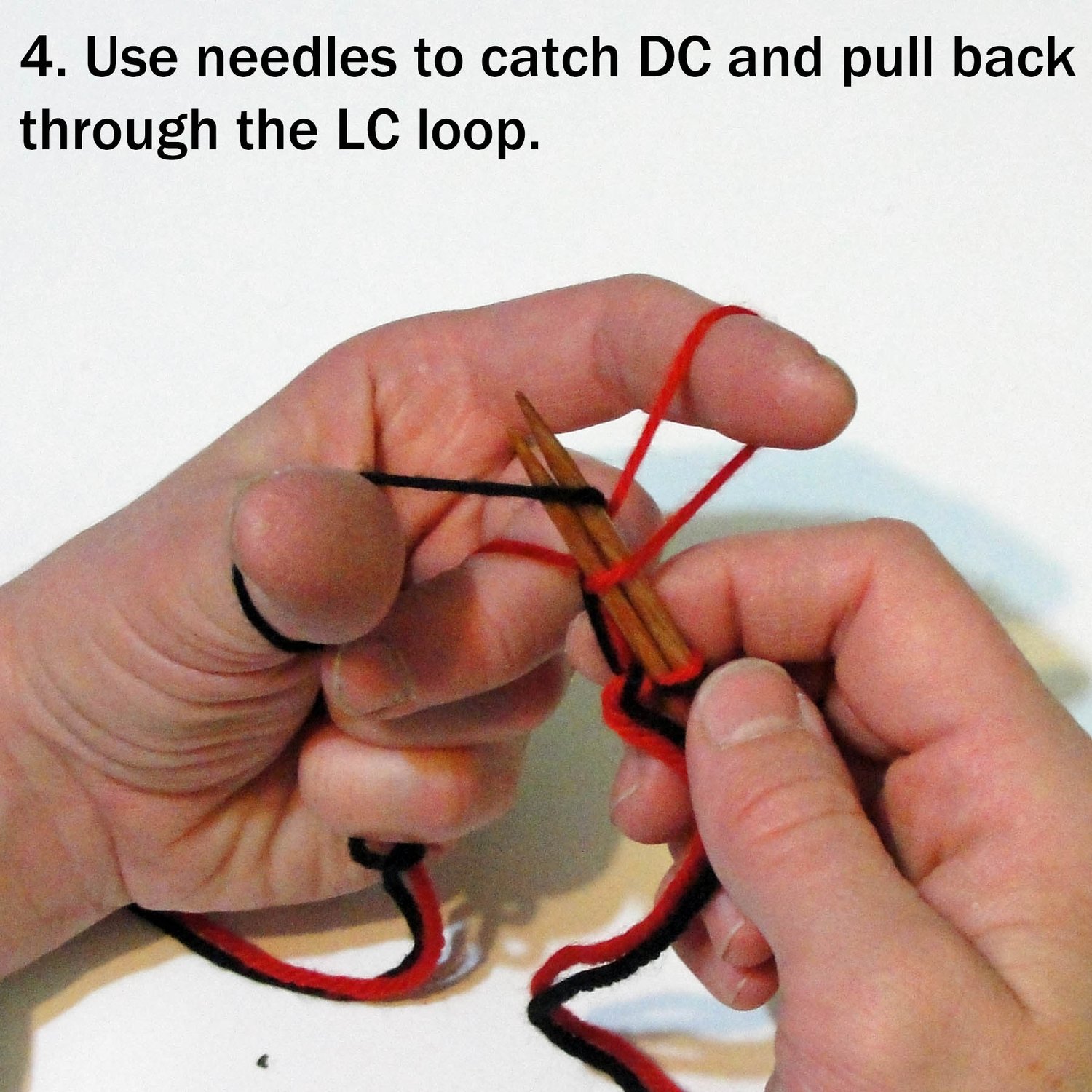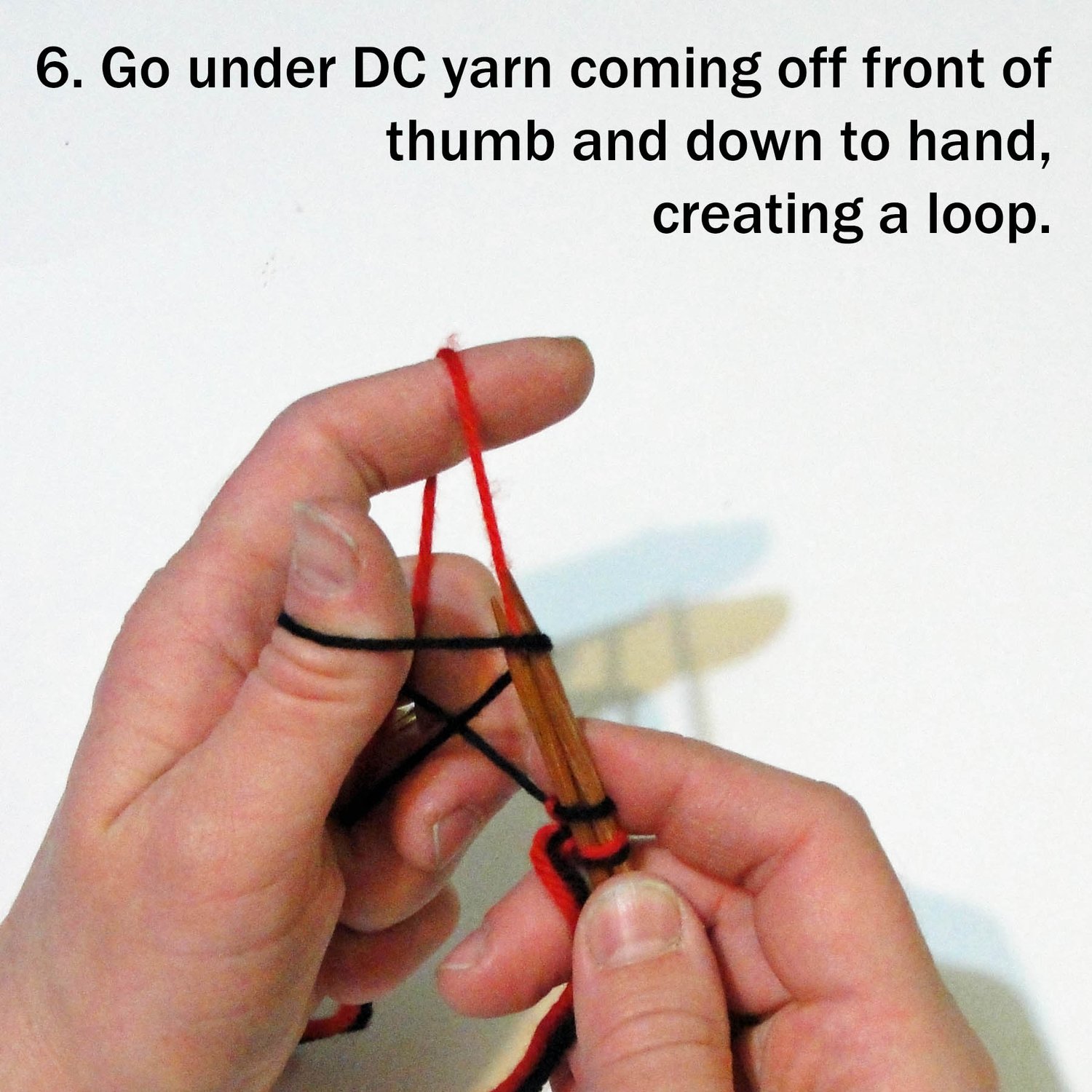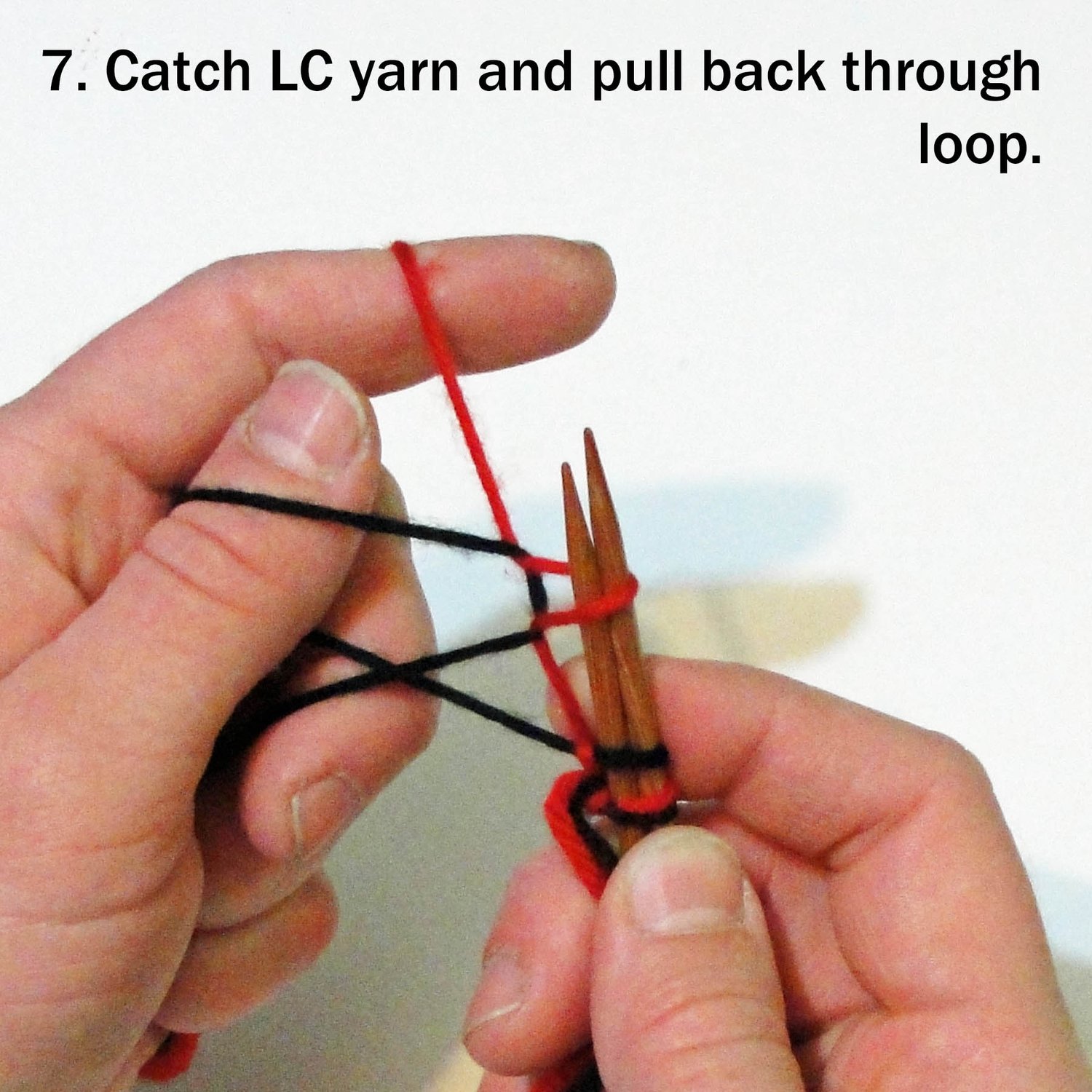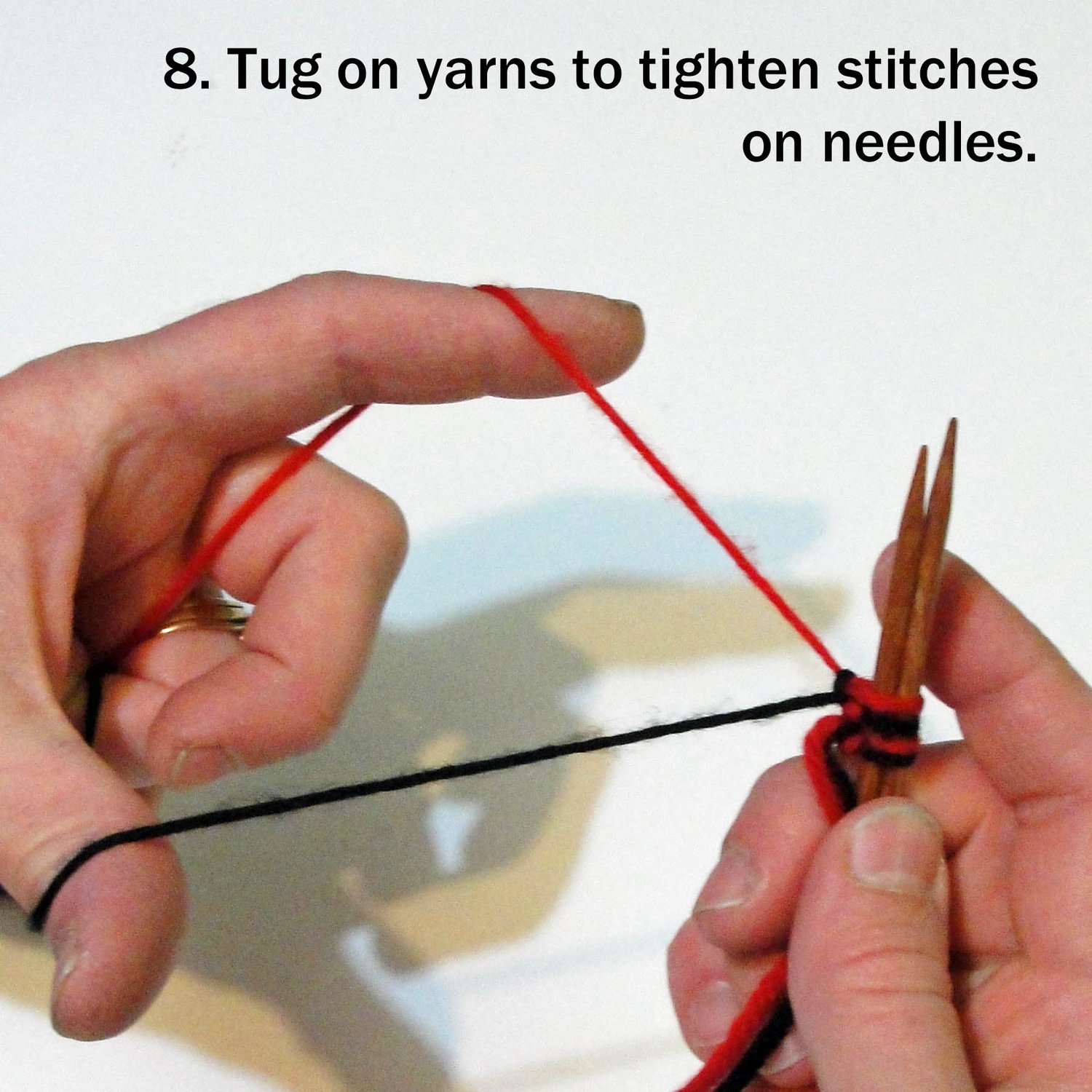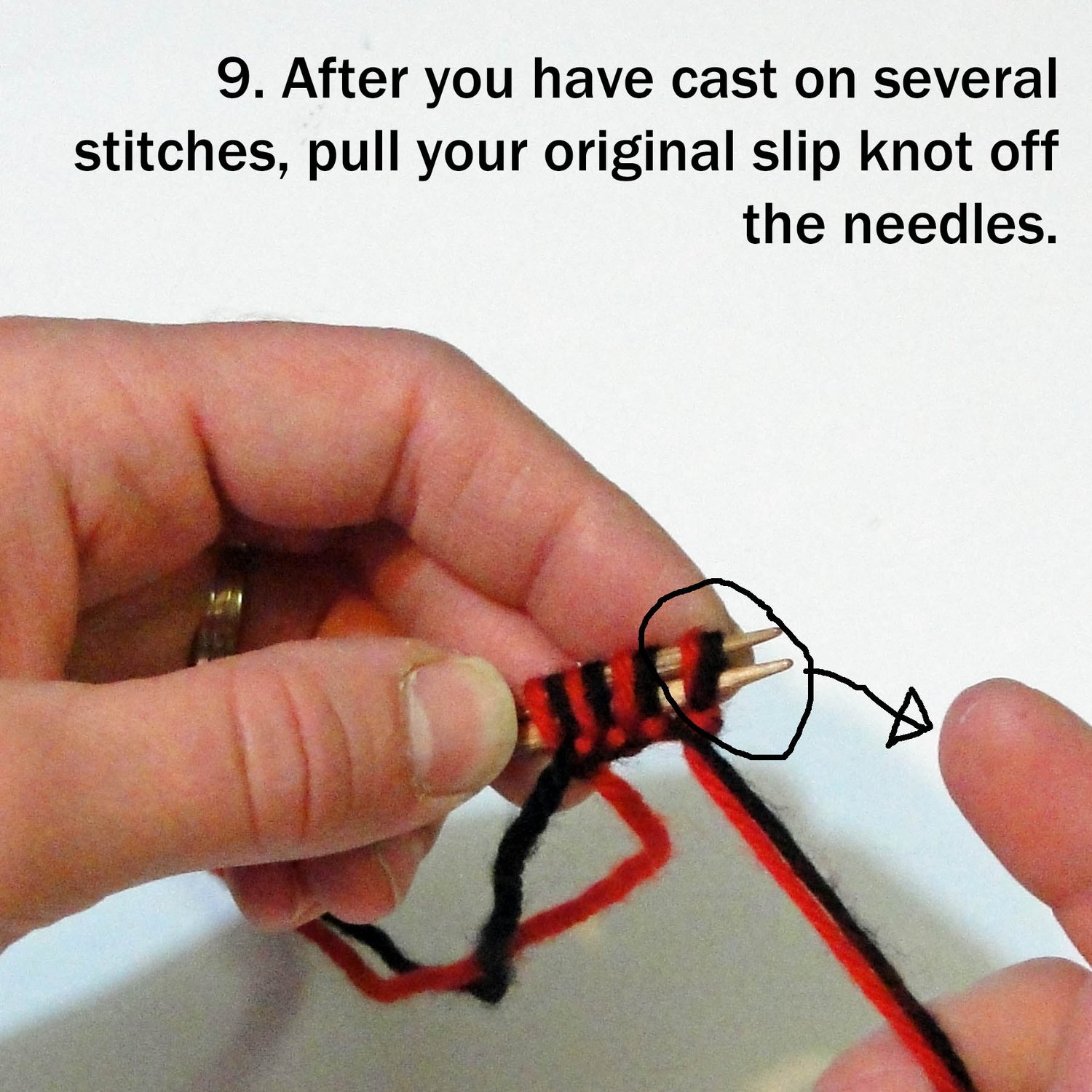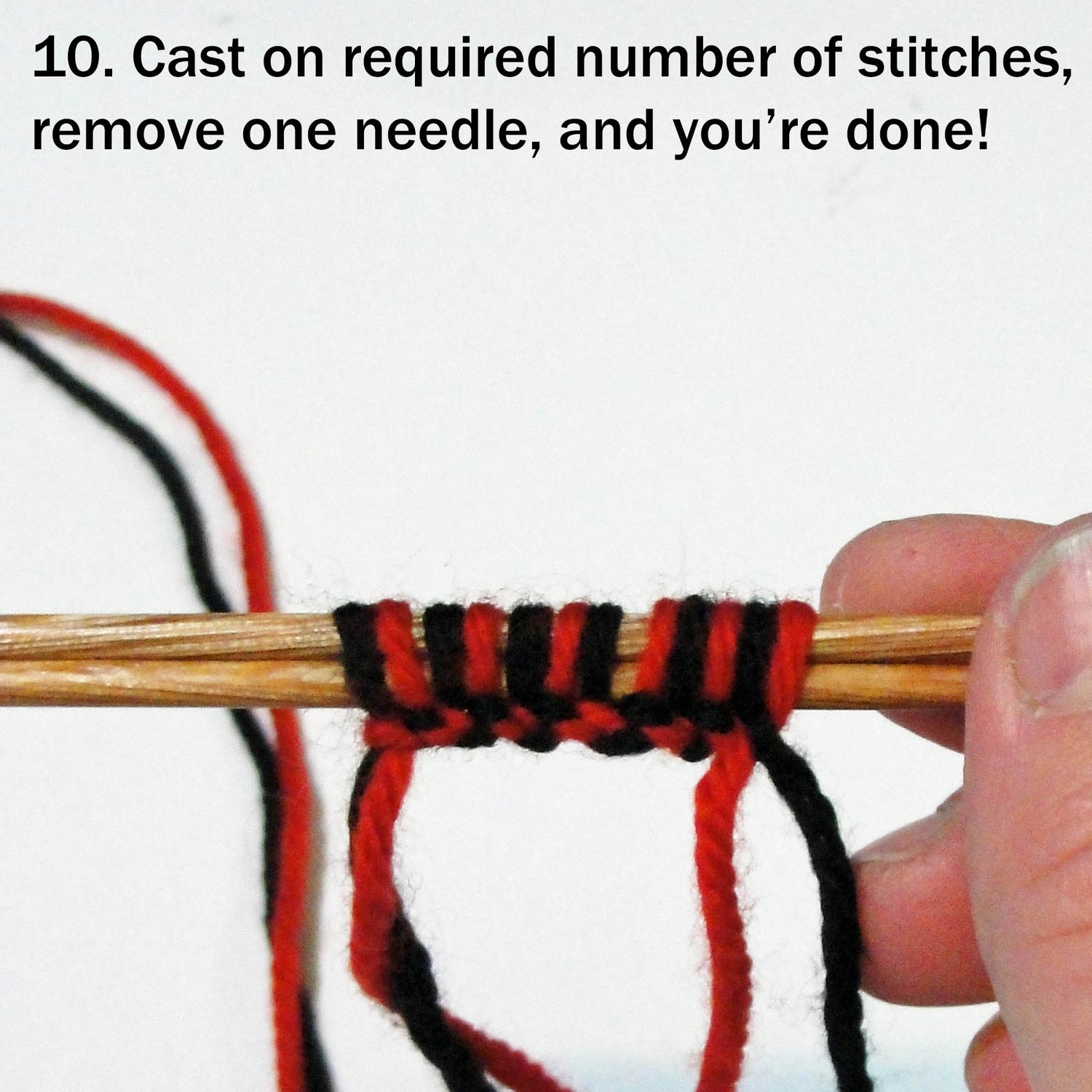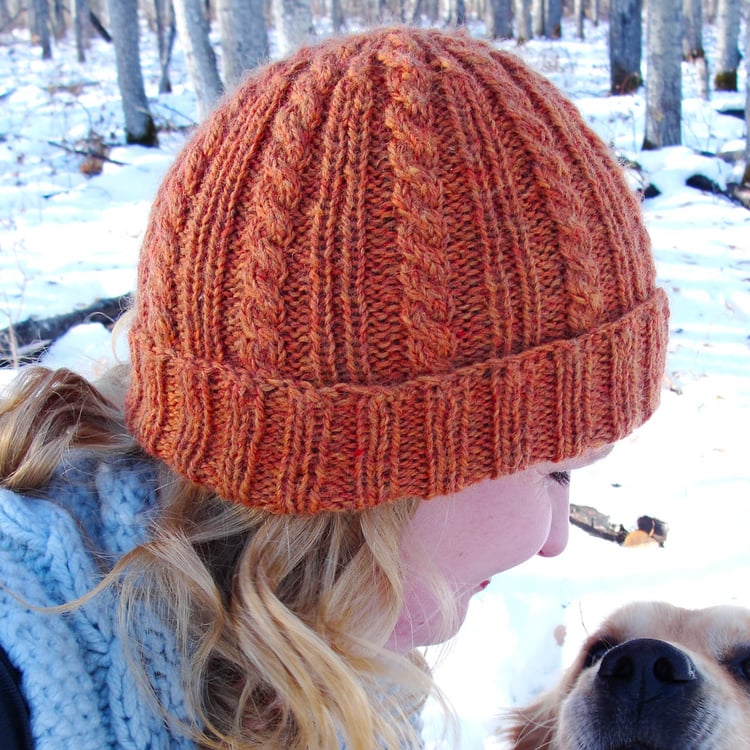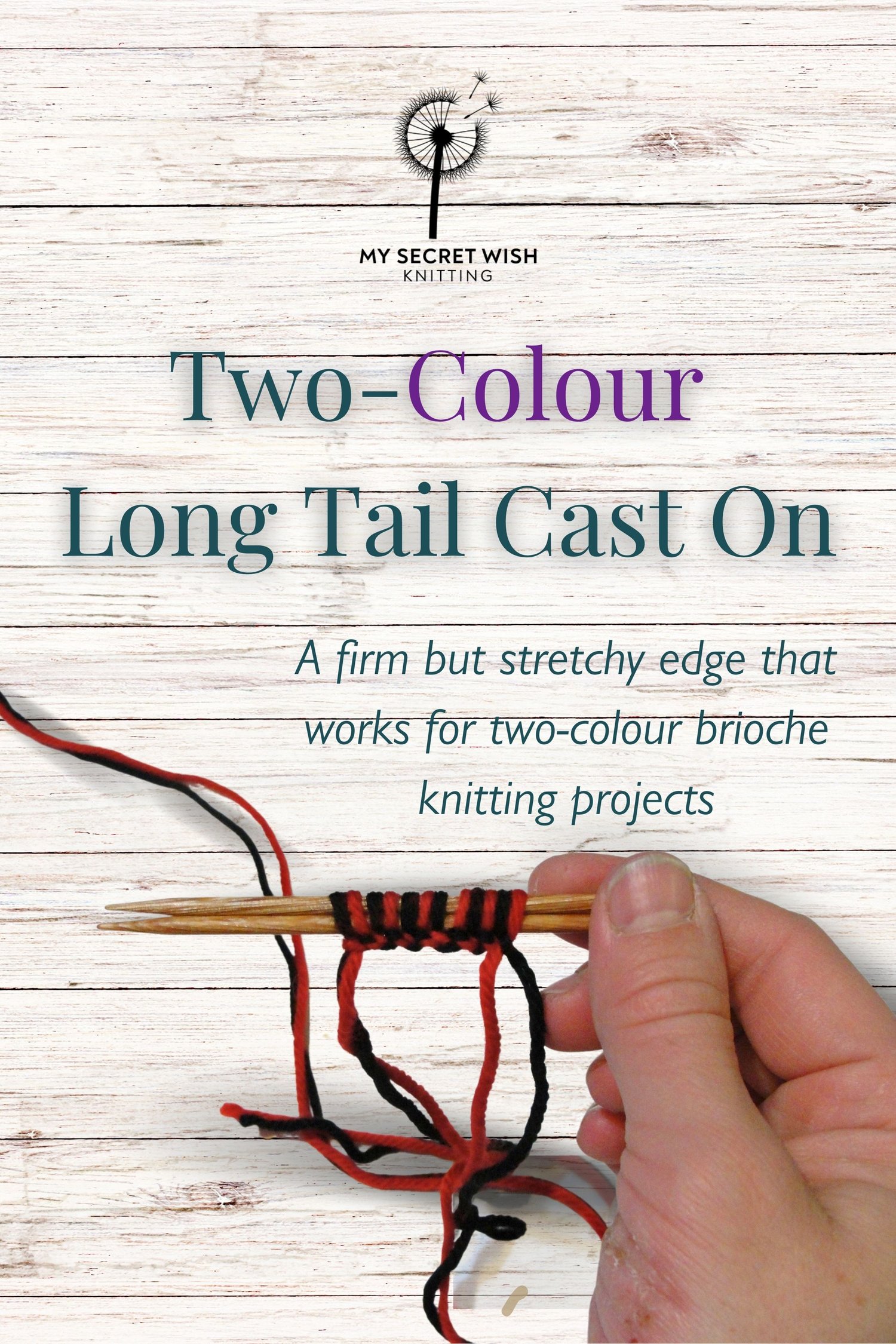
Two-Colour Long Tail Cast On
A firm but stretchy edge that works for two-colour brioche knitting projects.
The two-colour long-tail cast on (or two-color long tail cast on for my American readers) works well for starting two-colour brioche knitting projects in the round and more. For brioche projects, either use a needle three sizes larger than your project calls for, or cast on over two of the project-size needles, as shown here.
This variation makes the bottom “nubs” all one colour on one side, and the other colour on the opposite side. To have the colours alternate on both sides, use this same method, except start with colours reversed. Do Steps 1 & 2, then skip to step 6. After adding each stitch, change the position of the yarns, and ONLY pick up stitches through the loop on your thumb.
